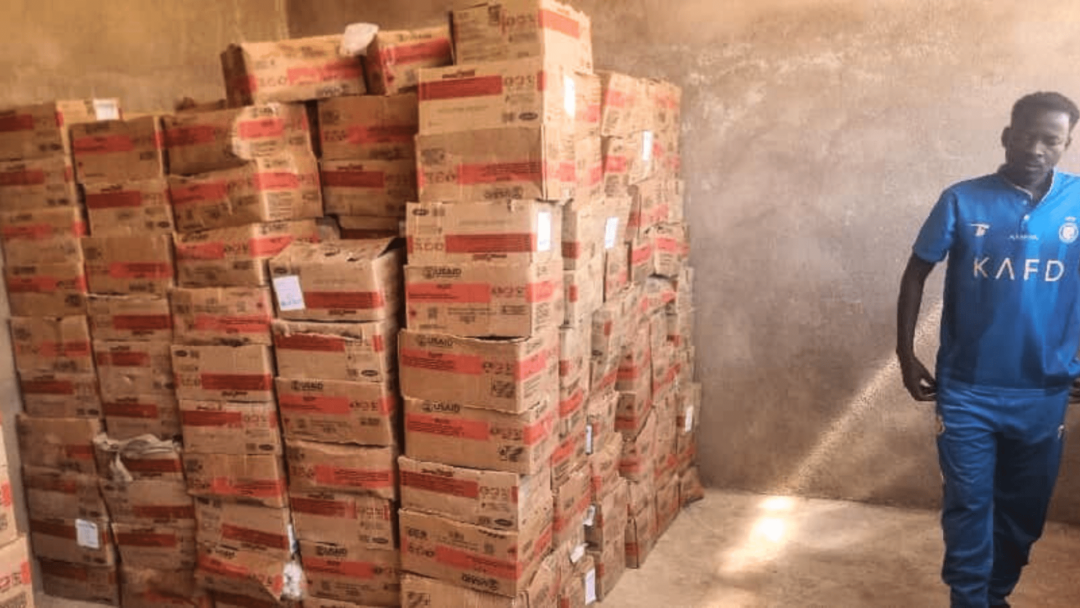 Blogs
Blogs
April 22, 2025 • 4 min read
While El Fasher (capital of North Darfur) has been experiencing conflict between warring parties for nearly a year now, since 10 April 2025, the state has seen the worst violence since the current war of Sudan began two years ago, with nearly 500,000 people displaced, mostly from Zamzam and Abu Shouk camps for IDPs (Internally Displaced People), with the latter camp, including the market area, continuing to be targeted. GOAL's Country Director for Sudan, Sanjida Tawhid, reflects on the escalating violence and its devastating impact.
Based on the latest reports, the minimum number of confirmed civilian deaths in North Darfur (and these are the only major documented incidents) between April 1 to April 20, 2025, is at least 557 people, with the worst casualties coming from Zamzam and Abu Shouk camps, from Al Malha, and El Fasher city. It should be noted that scores of people are still missing, and the death toll is expected to be exponentially higher once the many currently unidentified bodies are officially recorded, and once we are able to access the many areas which we are not able to now. The situation in El Fasher is worsening by each passing day. On April 16, a GOAL staff member lost her brother due to RSF shelling. On April 18, our senior staff in El Fasher had his entire home and his vehicle destroyed beyond repair (picture below).
We have received reports that many volunteers of Emergency Response Rooms (ERRs) have been targeted and killed, along with humanitarian staff while they were assisting affected community members. Most people in / from El Fasher, including GOAL staff, have lost at least their homes, their family members, friends, colleagues, over the last year.
People, including GOAL staff, fleeing El Fasher now are being attacked and looted as they seek safety. Women and children were not just subjected to worst forms of GBV during attacks in the camps, and then in El Fasher, but also on the way from El Fasher to Tawila and other localities.

As someone who has been working in humanitarian aid for many years and has responded to the South Sudan displacement crisis in South Sudan, Ethiopia, and Sudan, and then to the Rohingya crisis in my country (Bangladesh), to the Afghan displacement crisis in Afghanistan and Iran, among several other emergencies, throughout my professional life. With the war in Sudan entering its third year now, it must be noted that what is happening in Darfur is one of the worst crises that we have seen in recent times. Most civilians in the Darfur region who are alive today have been born into war, survived war and conflicts, and now they are going through it again, right in front of our own eyes. People in El Fasher are having to select between whether it is better to die at home or to risk traveling to safety and then contemplate what would happen if they died on the way. These are not options that many of us around the world must choose from.
Selective silence and indifference are no longer options. My urgent request to institutional donors is to please step up more and show up more and provide humanitarian actors on the ground with adequate resources to respond to this crisis. My other urgent request for humanitarian organizations on the ground, including my own, is to please intensify our collective efforts for diversification of donors, as well as to transfer more and more resources to local actors on the ground who are closest to their communities. The crisis in Sudan is not some local crisis, it is a continent-wide one and it goes much further than beyond Africa.
GOAL has been operational in North Darfur for the last 22 years. Our staff have responded to the war in Darfur. Between 200,000 – 300,000 people were killed in the region between 2003-2008, displacing nearly three million people. As of today, already nearly 500,000 people are displaced from their homes in just one state, North Darfur (not even the whole of Sudan), and if fighting intensifies over coming days in the manner that we have witnessed, the number will be 800,000. According to our first ever staff who had joined us when we started working in North Darfur over two decades ago, he feels that the current ongoing war in Darfur is more violent and widespread compared to the earlier war, as we are witnessing killings, destruction, displacement, and the forced uprooting of people of Darfur with significant levels of GBV (Gender-Based Violence), at a scale far more intense than before.
GOAL has been in Sudan since 1985, we have supported communities going through ‘literal hell’ before, and we will continue to (please see pic below which shows a shipment of in-kind donations – ready to use therapeutic food for treatment of severely malnourished children under five years, in Tawila, where majority of people from El Fasher are currently displaced to), as part of an inter-agency convoy. We have directly assisted nearly 500,000 people in North Darfur in 2024. GOAL will continue to do what we can to stay and deliver life-saving assistance to our communities and to enable us and other humanitarian actors to continue to do that, we need access to affected communities to provide lifesaving assistance, and for affected communities to be able to access that without fear.
We kindly ask the world to support us and other humanitarian actors responding in Sudan today.
